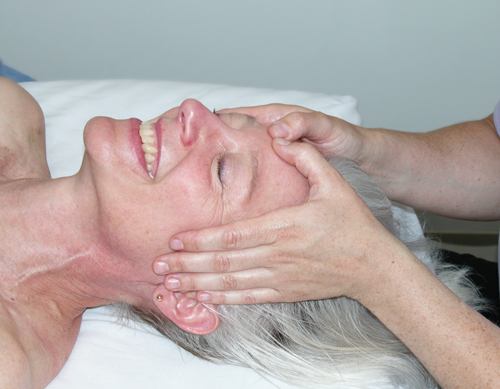by Karen Wise Olander
 Have you ever considered creating a volunteer Reiki program for people who might not otherwise try Reiki, such as people with cancer, the elderly, or others? Such a program provides an opportunity to spread the word about Reiki, strengthen your connection with other Reiki practitioners in your area, meet new people, and share ideas.
Have you ever considered creating a volunteer Reiki program for people who might not otherwise try Reiki, such as people with cancer, the elderly, or others? Such a program provides an opportunity to spread the word about Reiki, strengthen your connection with other Reiki practitioners in your area, meet new people, and share ideas.
There are many ways to structure a volunteer Reiki program. The following two approaches outline ideas to help you design a program for your own circumstances. Note that the two organizations described in this article are for people with cancer. But you could offer Reiki to the elderly, or to pre-op patients, or for kids in the hospital (or their parents!)... the possibilities are endless.
Harbor for Healing
The volunteer Reiki program "Harbor for Healing," created by a woman in Chatham, Massachusetts, is for women with cancer. It takes place once a week for two hours in two locations—Wellfleet and Chatham—on Cape Cod. Each location handles six appointments a week, with four to six practitioners. This program runs year-round.
Reiki Night
The other volunteer program, called "Reiki Night," is offered through Cancer Connection, an organization in Florence, Massachusetts, that offers programs and support groups for men and women with cancer, their partners, and caregivers. Reiki Night takes place for two hours, once a month, on alternating Monday and Thursday nights. This drop-in program accommodates an average of twelve to fifteen people at each monthly session. (Cancer Connection also offers individual Reiki sessions one day a week, with paid practitioners, funded by a grant.) Reiki Night is offered every month except August.
Reiki practitioners must be Reiki Masters to work in the Reiki Night program and Level IIs or Masters for Harbor for Healing. They also need extensive experience, as they work with people who are seriously ill. Each of the programs has a "leader" who, among other tasks, screens potential practitioners for experience and the ability to fit in with the other team members.
The Harbor for Healing team leader makes appointments for recipients by phone, communicates with practitioners, and oversees the program each week. The Cancer Connection program operates on a walk-in basis, so no appointments need to be scheduled, but the team leader e-mails practitioners to remind them of the monthly meeting date, tells them what they need to bring (tables or sheets), and acts as timekeeper during the sessions. She greets recipients as they arrive, has them fill in forms, and takes them to the tables for their sessions.
Practitioners at Cancer Connection take turns bringing tables and sheets. Harbor for Healing owns several tables (purchased with donations) and sets of sheets, which are stored at the site where the program takes place. In either case, practitioners need to arrive early, before the recipients arrive, to help set up the tables and cover them with linens and pillows.
Both programs feature a clinic-type setting: Tables are set out in rows with as much space between them as the room allows. At the entrance to the room a note is posted to remind people to lower their voices (and turn off their cell phones!) so as not to disturb anyone within.
After setup, before the evening begins at Cancer Connection, the Reiki Team gathers in a circle for prayer and healing words and thoughts. Practitioners can name people to whom they wish the group to send healing during the evening. At Harbor for Healing, practitioners greet recipients and talk with them briefly before the sessions begin.
The team leaders phone number is posted on all fliers for Harbor for Healing so that potential recipients can call and make appointments for the six 45-minute time slots available each week. Cancer Connection has a drop-in policy for their monthly program, so potential recipients sign up for a session when they arrive for the evening. The length of sessions on Reiki Night depends on the number of practitioners and recipients who are there on a particular evening, but it is usually about 25 minutes.
Practitioners in both programs find that doing Reiki with a partner (when there are enough practitioners to assign two to a table) is a luxury for those who usually work alone. With a partner, one practitioner can work at the recipients head and another at the feet, and then each can take a side and work down the receivers body in parallel fashion. Both practitioners and receivers benefit from this.
This is just part of the article which appeared in the Winter 2005 issue of Reiki News Magazine. In the complete article Karen gives many more examples and details about how to start a volunteer Reiki program.







